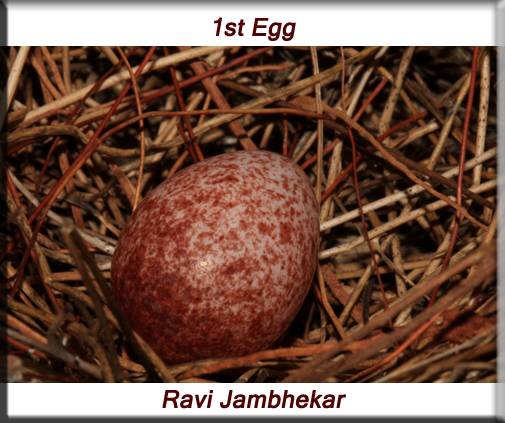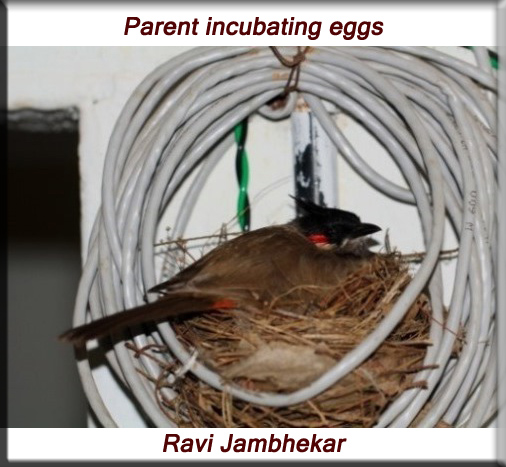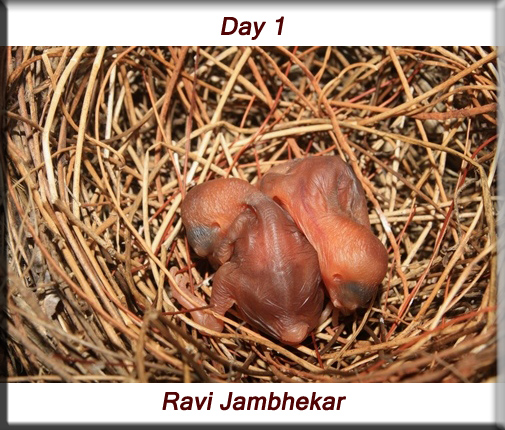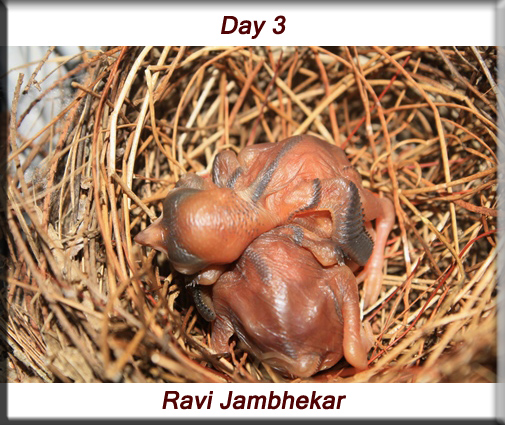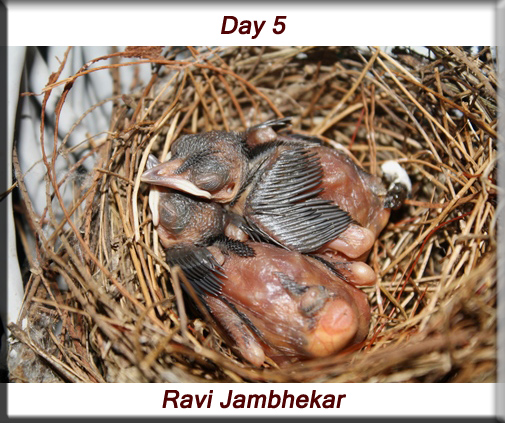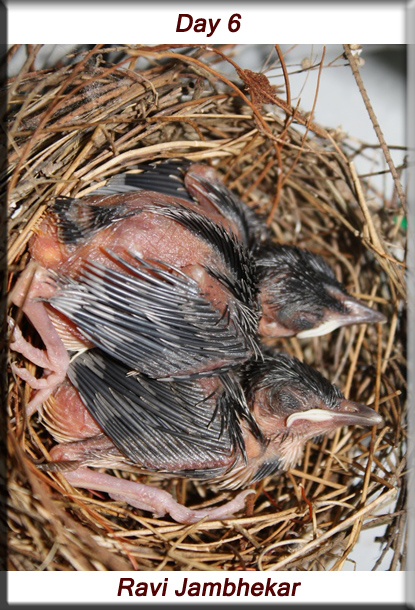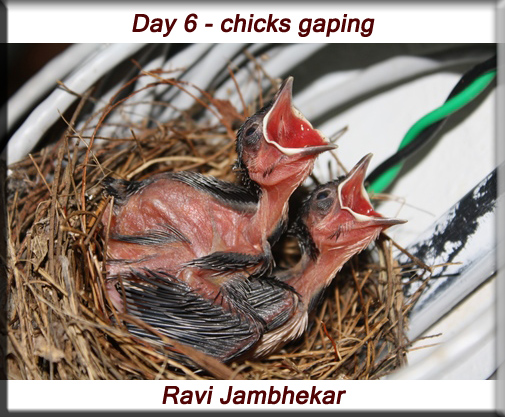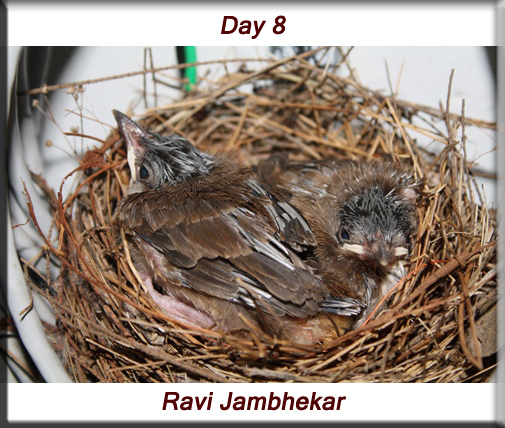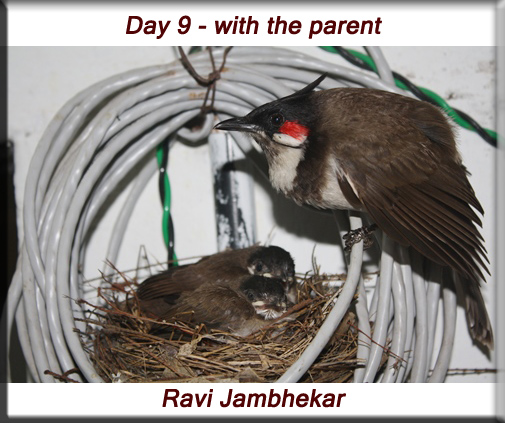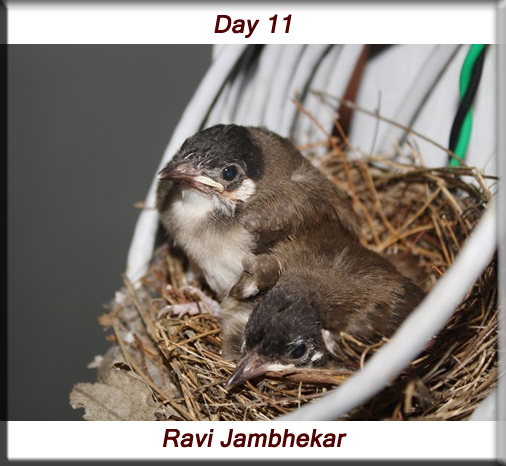Growth and development of parent-reared Red-whiskered bulbuls – in-situ observations from a nest in B.R. Hills, South Karnataka
Ravi Jambhekar
A nest of Red-whiskered bulbuls (Pycnonotus jocusus) was observed in B.R. Hills, South Karnataka during the months of April-May 2013. Detailed observations were made on the development of the chicks and the primary constituents of the chick’s diet from the day of hatching until the day the chicks fledged and left the nest.
Nest Building
The pair of adult Red-whiskered bulbuls began nest building activity on 20th of April 2013 and completely finished building the nest on the 23rd of April 2013. The nesting material used primarily comprised of dry twigs, dry leaves, cob webs and small threads to tie the nest to suitable supportive structure. Dry leaves and small twigs formed the base of the nest upon which a series of twigs were layered to form a cup-shaped nest. During the nest building days, nest building activity began around 06.30 hrs and was continued until early afternoon (12.00 – 14.00 hrs).
Egg Laying, incubation and hatching
As soon as the nest was completed an egg was laid on the 24th of April 2013 in the early morning followed by a second egg on 26th of April 2013. There was a gap of one day between the laying of the first and the second egg. During this time the first egg was not incubated during the day. Both eggs were actively incubated – both during the day and at night, by both parents once the second egg was laid. The eggs hatched after 16 days on the 9th of May 2013. Though there was a gap of one day between laying of the two eggs, both eggs hatched together on the same day.
The chicks – feeding and fledging
The chicks were almost equal in size on hatching and they were incubated by the parents for most of the time during the day and continuously at night until they fledged and left the nest.
The chicks were each fed at an average interval of 30 minutes from 06.30 hrs to 18.00 hrs during the next 10 days. The diet primarily consisted of insects in the first week, while some fruits were introduced after day 7. Although some fruits were given, this brood of chicks were primarily fed on invertebrates until they fledged.
The chicks fledged on the 11th day and although they remained in the vicinity for the next few days, once fledged, they never returned to the nest again.
| Day | Primary feed |
| One | small white spiders, moth caterpillars, forest cockroaches |
| Two | winged termites, moths |
| Three | small white spiders, moths, butterfly abdomen, bee grubs |
| Four | winged termites, cicadas, moths |
| Five | (not observed) |
| Six | cicadas, moth caterpillars, bees |
| Seven | Ficus fruits, cicadas, caterpillars |
| Eight | Forest jamun, cicadas |
| Nine | clear-wing bee hawk-moth, forest jamuns |
| Ten | clear-wing bee hawk-moth, caterpillar, moths, forest jamuns |
Development of Red-whiskered bulbuls
Continue to Page 2: Feed given to the bulbul chicks
Document edited by Devna Arora
Development chart published in 2013

